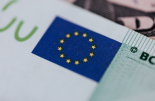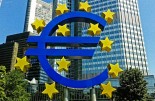Pimco: Is ECB pepping it down?
Pimco: Is ECB pepping it down?

This is a preview by Konstantin Veit, Portfolio Manager at PIMCO, of next Thursday's ECB meeting.
The ECB meets on Thursday. The ECB currently buys €80bn per month under the pandemic emergency purchase programme (PEPP) plus €20bn per month under the regular asset purchase programs (APP) and at this meeting the Governing Council will revisit the purchase pace of the PEPP against a fresh round of quarterly macroeconomic projections.
While the ECB will likely signal a somewhat lower PEPP purchase pace over the following quarter on the back of lower yields and improved activity data, continued worries about the pandemic evolution and a still weak medium term inflation outlook make a more material reduction in flow support unlikely.
We continue to expect a new PEPP purchase pace of €60bn per month, in line with the purchase pace earlier in the year and our view that the ECB will take the run rate of monthly net asset purchases down over time, from the current €100bn per month to €60bn per month in Q2 2022.
We don’t expect a meaningful upward revision to the 2023 HICP inflation forecast of 1.4%, and more color about the future of the PEPP beyond its earliest conclusion date of March 2022 will likely have to wait until the December meeting.
Investment implications:
Persistent ECB support remains a tailwind for risk assets but current valuations offer little room for sizeable spread compression. In addition, risks to the macroeconomic outlook remain elevated and a regime of hard fiscal dominance elusive.
Additional thoughts
New staff forecasts:
The current practice of conducting a comprehensive joint assessment of the prevailing state of financing conditions against the inflation outlook at meetings in which new staff projections become available makes the September meeting one of the more relevant meetings, as the outcome of that assessment will inform the PEPP purchase pace over the following quarter.
On growth, although the ECB is likely to acknowledge the continued risks from the delta variant, in light of improved activity data an upward revision to the ECB’s near term growth projections is likely and the ECB will probably continue to see the risks to the economic outlook as broadly balanced. As for inflation, the July Meeting Minutes eluded to upside risks relative to the June staff projections, particularly regarding the near term. While a marking to market is likely to see the 2021 and 2022 forecasts revised upwards indeed, we believe expectations for late in the forecast horizon are unlikely to be meaningfully altered.
The most relevant 2023 HICP inflation projection will either remain unchanged at 1.4%, or see a minor uplift to 1.5%. At present, Euro area inflation is driven almost entirely by energy price base effects and there has been no sign of a sustained pick-up in underlying price pressures. Even the minor upward revision would see the ECB continue to project a substantial undershoot relative to the price stability target over the policy relevant horizon. In December the ECB will publish the inaugural 2024 economic projections, which will probably serve to inform the decision on the asset purchase policy configuration in 2022.
Medium term outlook:
The ECB currently buys €80bn per month under the PEPP and €20bn per month under the APP. Once the pandemic-related effects on the inflation path are sufficiently neutralized via temporary policy measures like the PEPP and subsidized liquidity provisions, we believe more regular asset purchase tools will come back to prominence in order to fine-tune the post-pandemic monetary policy stance from 2022 onwards, while interest rate cuts will remain on the back-burner. In our view, the strategy review results institutionalize the recent ECB pivot from intensity to duration of monetary policy support, which is reflected in a focus on persistence of monetary policy action close to the lower bound on interest rates. What matters to the monetary policy stance is the total amount of asset purchases, with the split amongst programs largely a political decision.
We expect the PEPP to end next year, potentially as early as March 2022, and expect the regular APP to be upsized from €20bn to €60bn per month in return, as progress towards the 2% medium-term inflation aim remains meagre. We would also expect the ECB to maintain the practice of regular joint assessments of financing conditions and inflation outlook to derive asset purchase quantities, and to emphasize existing APP flexibilities, particularly in relation to an impaired transmission mechanism which should dispel concerns about ability and willingness to deviate from the capital key as needed.
Strategy review:
We believe the new strategy means, by and large, old policy and cements the revealed preference of maintaining the current monetary policy configuration for longer instead of easing conditions aggressively. The ECB currently projects 1.4% HICP inflation for 2023, and in moving its medium-term inflation target up to a symmetric 2% the ECB invites the question of how it will achieve this more ambitious goal from such a low starting point while using the same old tools. And indeed, the strategy review didn’t address specific methods or configurations to reach the new 2% target. Setting a higher inflation target alone without altering the policy mix therefore does little to assuage doubts that the ECB can achieve its new target.
We believe the new forward guidance on policy rates serves mainly the purpose of avoiding mistakes of the past, of tying the Governing Council to the mast and avoiding premature tightening (APT) of monetary policy. We believe the new forward guidance on policy rates implies that the ECB would now have to project inflation at 2% for the two years following the current year, and probably core inflation above 1.6% and on an increasing trend before it considers hiking interest rates.
While the ECB’s APT is intended to reassure markets that the ECB will remain patient and won’t repeat the hawkish mistakes of 2008 and 2011, that focus on defense also suggests that there won’t be any serious attempt to credibly close the longstanding gap between the inflation target and projected inflation. Similar to the Bank of Japan, the ECB is now firmly focused on persistence and sustainability of its monetary policy measures and less so on achieving the inflation target within a reasonable horizon.








